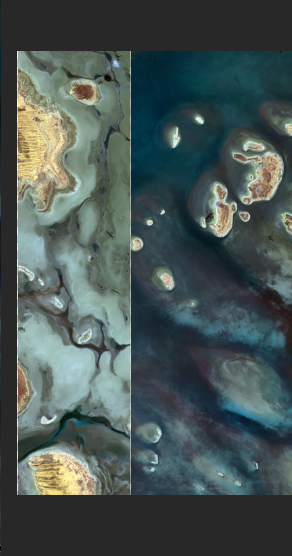Planets are so deep and complex that creating textures from scratch for space scenes can be really hard if you don't have a good knowledge of geography.
Satellite imagery is a good source of geographical phenomenon as seen from space. I've found that you can create a lot of observable depth by zooming into an area of the earth. For example - using a portion of Sinai to create a rough, desert world.
You can find satellite imagery from a lot of places, for maximum originality look around in google earth (although it may not be very high resolution). NASA also has a gallery of photography of the earth from space, which can create some very interesting geographies.
Another option i've found are these giant earth textures.
I'm using this image from NASA. The islands look like they could be continents.
Load up the image in photoshop and crop out areas which might give you problems when making it seamless. In this image, I don't think I have enough information to handle the landmass on the bottom right, so I cropped it out.
Select the right portion of the image, and move it to the left.
Now that it's on the left, take a soft brush and erase the side and do any other things you might need to in order to blend it in. The eraser should be enough.
It doesn't have to be perfectly smooth. What this does is make the right flow into the left, so that there's no obvious seam on the sphere.
Now take a little more than half of the bottom and duplicate it.
Now flip it, this is so that when it's wrapped into a sphere, this wont have any strange seams at the bottom, smooth it out like you did the last one, and make sure it's not as uniform as the other side.
Now do it again for the top.
Next, in order to sell that this is a planet, we need to create atmosphere. I don't have any fancy shaders, but I do have this cloud map. Drag it on top of the image and change the layer mode to "lighten".
Now it's looking pretty planet-y.
You should decrease the contrast in order to give it a more faded look, like there's an atmosphere in the way.

I tried this with various other textures. This is an arid, forest planet.


















